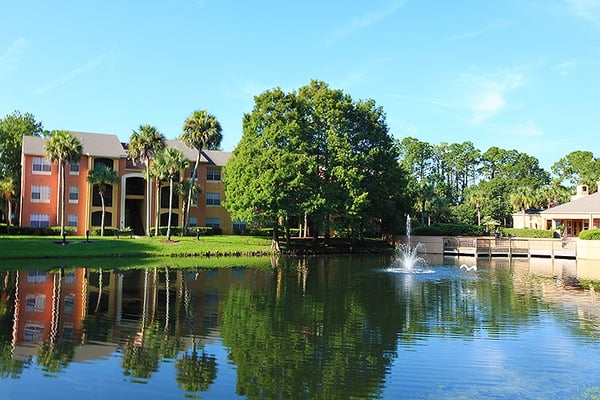There are now more Millennials than Boomers—83.1 million versus 75.4 million. Ignore their housing desires at your own risk.

Millennials are not only more numerous but also more diverse than previous generations. A U.S. Census Bureau report says, 44.2 percent are “part of a minority race or ethnic group (that is, a group other than non-Hispanic, single-race white).” Diversity may add challenges to figuring out what appeals to Millennials in housing, but Lloyd Jones Capital is wooing them into apartments Realtor magazine has just weighed in on working with this biggest generation. i'll highlight a few of their findings below:
Opportunity to Leave the Nest
Regardless of race or ethnic group, Miami-based Lloyd Jones Capital Multifamily Investment has done the math. It says 30 percent of Millennials still live with their parents and sees opportunity to help 25 million Millennials move out of mom and dad’s home and into an apartment. To facilitate Millennials moving, the company is acquiring and “rebranding apartments.”
Often, rebranding means, is choosing a well-located project for purchase, focusing on Millennials rather than other target markets and making sure amenities are up to snuff, including, tech, exercise facilities and fun. In Florida, that means water amenities, too. Lloyd Jones investor-funded apartment complexes are primarily in Texas and Florida. Property Websites, see a link to an example below, include everything a prospective renter needs to know: floor plans, amenities and rent. Below is The Granite at Porpoise Bay in Daytona Beach, Fla.

Diverse and Growing
In keeping up with Millennials, it is important to keep in mind that the other big generation, Boomer, was increased by immigration. Today’s 75.4 million Boomers includes Boomers born outside the U.S. who immigrated into the county. Overall, the Boomer population is shrinking. The only data I could find to break out those born in the U.S. versus the added immigrant Boomers was from 2012. Why does this matter? Demographers know that there were 76 million babies born in the U.S. from 1946 to 1964; only 65.2 million of those birthers were still alive in 2012, five years ago, which means that 14 percent of Boomers born in the U.S. were already dead five years ago.
Immigrant boomers have kept Boomer population hovering around 76 million. And that begs a question. Will immigration swell the Millennial numbers by 14 percent? If so, in coming years there could be close to 95 million Millennials. This is especially relevant given that Millennials are already the most diverse generation even without adding new immigrants. As diversity increases, when do demographers recalibrate who is in the minority? Even the Census Bureau has started to use the phrase “minority majority” to describe certain markets.
Another issue is just what years count in counting who a Millennial is? Demographers seem to agree that 1982 is the starting point, so that the oldest in the gerenation turn 34 in 2015. But what's the latest year? Authors Morley Winograd and Michael D. Hais in their 2011 book Millennial Momentum, said the last year bracket was 2003, which would mean that the youngest of the Millennials are only 12 and should still be in the nest. But others start the generation in 1980 and end it in 2000. Still others are talking about those 18-to-34, which would put the final year at 1997. The Census Bureau, which reports Millennials as the largest generation, gives the dates as 1982 to 2000, which puts the youngest at 15 years of age.
Ricardo Mor reporting for the Miami Herald quotes the Census Bureau when he writes, “Just over 30 percent of 18- to 34-year-olds in the U.S. live at home with a parent. It’s a big jump from recent years; in 2000, 23.2 percent of those in the age bracket lived at home with a parent.”
Obviously 30 percent nationwide is not a majority, so even though there has been an increase of more than six percent in the number of young adults still living with mom and dad, 70 percent of Millennials are already on their own. And of course, some are still in high school or who aren’t out of college yet, so should still living with mom and dad.
Wooing Millennials Out of the Nest
Some places, usually expensive to live places, exceed the norm. Even though Mor says that buying in Miami is 50 percent less expensive than renting, 41 percent of Miami-area Millennials are still in the nest. I was in Miami in June, and saw firsthand that Miami is growing ever more expensive, because of demand by internationals—including those from South America and even China. International buyers and renters pay cash for both owned homes and rentals.
It’s hard for those just starting out, perhaps burdened with student loans, to compete. There is a lot of building going on Miami. It will be interesting to see as new living units go on the market what happens to demand and prices.
Mor writes that Millennials are not buying because renting allows for greater flexibility for relocation, that Millennials lack downpayment savings and that there is a lack of available lending from banks.
I have many Millennial nieces and nephews. Even though all are in the same extended family, they have very different life stories. Of a dozen Millennial nieces and nephews, only two could be said to live at home, but it is because they are in their final college years. Three of the 12 are married and one soon will be. Two of the 12 own homes, both purchased around the time they got married to their spouses. Both homes were foreclosures, though in one case, the home continued to lose value after it had been purchased. One of my married nephews is in the military and has moved around a lot. He would likely buy, if he knew he would stay in one place long enough. Only two of these Millennials have children: One niece has two children and is married and home owning. The other, who also has two children, is no longer married, so is on her own as a single mother. Some, but not all, of my Millennial nieces and nephews moved back home after graduating from college and paid low rent while paying down student debt and saving up for an apartment deposit. Of course, my own Millennial tale is anecdotal but reflects the great variability in life story and motivation and that more rent than own.
Majority-Minority
But there is even more to the Millennial story in that the Census also reports that in some regions the entire population is “majority minority,” an oxymoron that expresses the dilemma faced by demographers when there is a sea change in demographics as there is with both overall population and with Millennials.
Five states or equivalents, the Census says were majority-minority: Hawaii (77.0 percent), the District of Columbia (64.2 percent), California (61.5 percent), New Mexico (61.1 percent) and Texas (56.5 percent). Among the remaining states, Nevada is the closest to crossing the majority minority threshold, with a population 48.5 percent minority. More than 11 percent (364) of the nation’s 3,142 counties were majority-minority in 2014. Five reached majority-minority status in the year starting July 1, 2013: Russell, Ala.; Newton, Ga.; Eddy, N.M.; Brazoria, Texas; and Suffolk City, Va.
Tips for Working with Millennials
Realtor magazine has these tips for Realtors representing Millennials:
1. Authority Matters. Millennials use pros to validate their decisions and Realtors need to make them part of the process. They gather information tech fast, decide fast and want to make their own mark.
2. Small Living is Big. Small floorplans are OK, because home is a base for other activities. Small also reflects both the burden of student loans and the desire to not be maxed out moneywise.
3. Multi-Use Spaces. Open, multifunctional, casual interiors appeal to Millennials partly to maximize the overall sense of space in small spaces.
4. Green Gadgets Rule. Millennials have electronic gadgets that need places to recharge—lots of outlets. They require fast Internet, and are interested in programmable LED lighting and energy-efficient heating and cooling systems as well as in renewable and reclaimed materials. Thrift is in, in terms of both lifestyle and store.




0 Comments